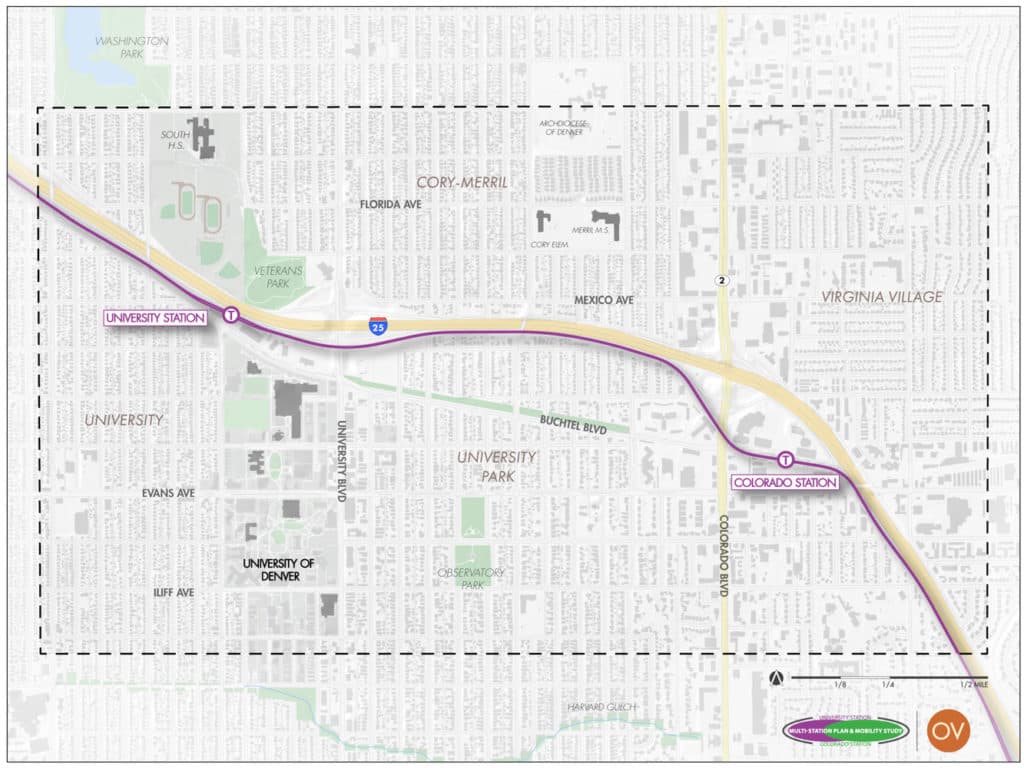
There's a significant update coming tonight on an effort to reimagine two of Denver's older light-rail stations.
The city of Denver is working with a nonprofit, the University of Denver and others on a master plan for the University and Colorado stations and the two-mile area that connects them.
The goal is to think about how the two stations could be transformed from "backdoors" to "mobility hubs" and "active local destinations," according to Transportation Solutions Foundation. It's part of the city's overall push to create transit-oriented development around its bus and rail stations.
"We really want each station to be a small urban village that has amenities nearby, that can serve transit users and be resources and amenities to the communities themselves," said Robby Long, a planner and communications manager with Transportation Solutions.
This is a planning effort and does not guarantee any actual change to the area. "Its intent is to be very action oriented, but the specific outcomes of the plan and the next steps are yet to be fleshed out," Long said.
The project team will talk about some plans and ideas while gathering public input at Denver South High School tonight, Jan. 17, from 5:30 p.m. to 7 p.m. at 1700 East Louisiana Avenue.
The planning project has been underway since this summer and should conclude in May.
"We’re looking at anything that removes barriers for accessing the stations," he said.
Part of the problem seems to be that these stations were built around the "park-and-ride" model: Drive to the station, get on the train.
This strategy allows people from a broader area to access the train with relatively few lifestyle changes, but it also can result in a station that's boxed in by parking garages and busy roads.
The University of Denver Station, for example, is boxed between Buchtel Boulevard, Interstate 25 and its own parking garage.
Meanwhile, Colorado Station is near the Colorado Center shopping area, but its direct neighbors are parking lots, a self-storage building and the Barbee's Freeway Ford auto dealership. (However, there are plans underway for a sizable residential/retail project near the station.)
The team hasn't published recommendations yet, but Long gave me an idea of how it's shaping up.
One strategy could be to improve bicycle access along Buchtel Boulevard, which connects the two stations.
"It has kind of a disconnected bike facility right now, and there are some pretty dangerous intersections," Long said.
The planners also want to create more of a connection between the University of Denver Station and the school of the same name. One major complaint about access to the station: The vehicle access ramps to the RTD parking garage at University of Denver Station make walking to the station far less pleasant, as some users have told the team.
They'll also be asking the big question: Considering the city has been talking about transit-oriented development down here for more than a decade, why hasn't it happened at a larger scale yet?
The planning effort is funded by a $200,000 grant from the Denver Regional Council of Governments.
This story was updated because I imprecisely said that these stations were among the "oldest" in the state. I should have said "older," because, as a reader pointed out, they're only about 10 years old, while the light-rail system in Denver is 20 years old. Sorry!












